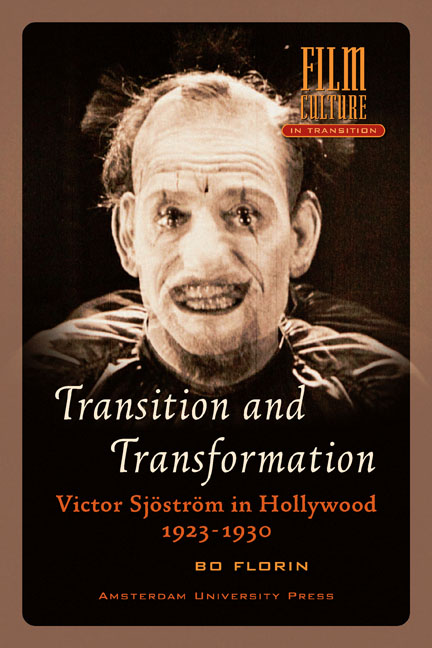Book contents
- Frontmatter
- Contents
- Acknowledgements
- Introduction – From Sjöström to Seastrom
- Sjöström – From National to International
- A European in Hollywood – NAME THE MAN and the Shift of Production Systems
- From Scientist to Clown – HE WHO GETS SLAPPED
- A for Adultery – THE SCARLET LETTER
- Conquering Nature – THE WIND
- Fragmented Pieces – Writing the History of the Lost Hollywood Films
- The Shadow of the Silents – A LADY TO LOVE
- The Genius and the System– Some Concluding Remarks
- Notes
- Bibliography
- Filmography
- Index
- Film Culture in Transition
Introduction – From Sjöström to Seastrom
Published online by Cambridge University Press: 22 December 2020
- Frontmatter
- Contents
- Acknowledgements
- Introduction – From Sjöström to Seastrom
- Sjöström – From National to International
- A European in Hollywood – NAME THE MAN and the Shift of Production Systems
- From Scientist to Clown – HE WHO GETS SLAPPED
- A for Adultery – THE SCARLET LETTER
- Conquering Nature – THE WIND
- Fragmented Pieces – Writing the History of the Lost Hollywood Films
- The Shadow of the Silents – A LADY TO LOVE
- The Genius and the System– Some Concluding Remarks
- Notes
- Bibliography
- Filmography
- Index
- Film Culture in Transition
Summary
Victor Sjöström (1879-1960), or Victor Seastrom as he was known during his Hollywood career, is undoubtedly the most renowned Swedish director from the period of silent cinema. In the present digital era, however, a long time has passed since these early years of moving pictures, and his contribution to film history might at least seem distant, if at all important. However, numerous retrospectives during the first decade of the twenty-first century (e.g. in Stockholm, Helsinki, New York, Montreal, Toronto, Munich, London, Lisbon, Madrid, Barcelona, São Paulo) and some important restoration projects, as well as the sensational rediscoveries of hitherto lost material, all testify to the significance of Sjöström's films.
This study attempts to explore the films directed during Victor Sjöström's Hollywood years from 1923 to 1930. My research endeavours to analyze the director's transition from European to American film culture. Central to this analysis is the question of film style and its transformations, from Sjöström's earlier films directed in Sweden – in particular, those from the years 1917 to 1923, often labelled as the “golden age” of Swedish cinema – to the American ones. Equally important, however, are questions of framing: the complex interplay between texts and contexts within a new production culture.
My general definition of “film culture” draws inspiration from Richard Maltby and his “New Cinema Histories”, considering cinema “a site of social and cultural exchange”, though my focus on the films rather places this work within the paradigm of Jean Mitry's classic proposal from 1973 for a film histoire totale, which Maltby also refers to: “simultaneously a history of its industry, its technologies, its systems of expression (or, more precisely, its systems of signification), and aesthetic structures, all bound together by the forces of the economic, psychosocial and cultural order”, as well as to Michèle Lagny's definition of film history “as part of a larger ensemble, the socio-cultural history”.
There is, however, a methodological problem implicit in the assumption of the European (or more specifically, Swedish) film culture as clearly distinguishable from Hollywood film culture.
- Type
- Chapter
- Information
- Transition and TransformationVictor Sjöström in Hollywood 1923–1930, pp. 9 - 16Publisher: Amsterdam University PressPrint publication year: 2013



